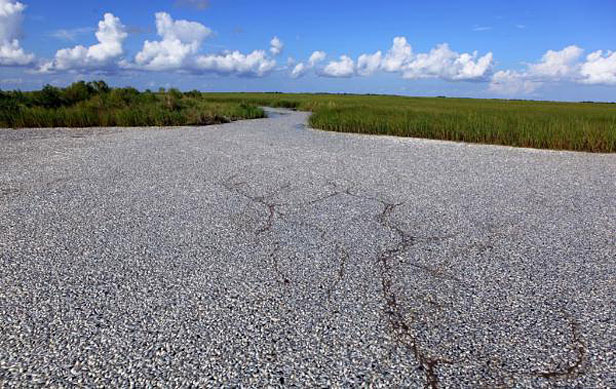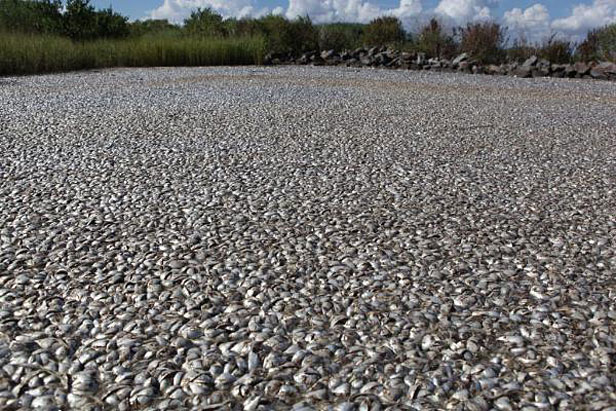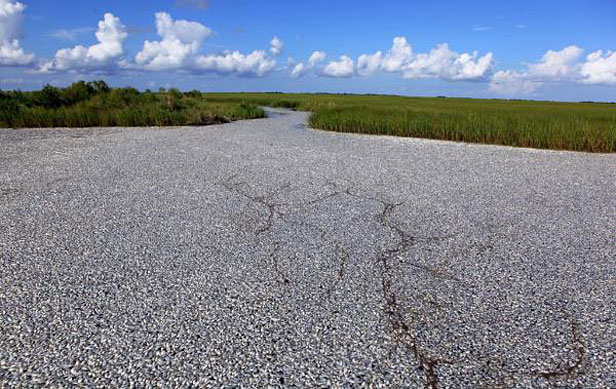 Fish kill in Plaquemines Parish at Bayou Chaland, west of the Mississippi River. Photos courtesy of Plaquemines Parish government
Fish kill in Plaquemines Parish at Bayou Chaland, west of the Mississippi River. Photos courtesy of Plaquemines Parish government
A waterway that drains into the Gulf of Mexico has become literally blanketed at the surface with the dead bodies of pogies, redfish, drum, crabs, shrimp, and freshwater eel, the New Orleans Times-Picayune reports.
What killed the fish? There are two major suspects. The crime scene — Louisiana’s coastal Plaquemines Parish — lies at a crossroads frequented by two confirmed eco-thugs: Big Ag and Big Oil. Its coasts were damaged by the BP oil disaster, the Picayune reports. But the area is also plagued regularly by oxygen-depleting algae blooms, fed by fertilizer runoff from Midwestern farm fields, which produce aquatic dead zones — swaths of water that can’t support sea life. Indeed, a recent fish kill in nearby St. Bernard Parish “was attributed to low oxygen levels in the water,” the Picayune adds.
According to Yahoo News, fish kills from low oxygen are a regular annual occurrence in the area, but “those kills tend to be limited to a single species of fish, rather than the broad sort of die-off involved in this kill.”
At this point, it’s impossible to tell whether hypoxia (low oxygen) from Big Ag’s fertilizer runoff (more about that here) or toxins from BP’s oil and dispersants killed the fish, or if some unholy conspiracy between the two performed the deed.
Unfortunately, according to Yahoo News, investigators aren’t on the case. The news service reports that Plaquemines Parish President Billy Nungesser, who distributed these stunning photos above and right, is “having to plead with officials from the Louisiana Department of Wildlife and Fisheries, the Environmental Protection Agency and the National Oceanic and Atmospheric Administration to investigate.”
Let’s hope these bumbling detectives get to the scene of the crime fast. In the mean time, it’s worth remembering that in the immediate aftermath of the Exxon Valdez oil spill, Alaska’s Prince William Sound seemed to be in surprisingly good ecological shape, considering everything. But not long after, populations of certain fish species collapsed. Twenty years later, MSNBC reports, oil is still hanging around in the region and, in some areas, remains almost as deadly as it was immediately after the spill.




